Timeline: WHO's response to the coronavirus pandemic and the ensuing controversy
The organization has faced mounting criticism over its handling of COVID-19.
The World Health Organization has faced mounting criticism in recent weeks over its handling of the coronavirus pandemic.
As an independent evaluation of the WHO's response to COVID-19 remains underway, here's a look at some of the steps taken by the global health arm of the United Nations and the ensuing controversy that's unfolded.
The following timeline does not include every coronavirus-related event or WHO activity.
Dec. 31, 2019
The WHO's country office in China picked up a media statement by the Wuhan Municipal Health Commission from its website on cases of "viral pneumonia" in the central Chinese city of Wuhan.
The country office then notified the International Health Regulations' focal point in the WHO Regional Office for the Western Pacific about the media statement on the cases and provided a translation.
The WHO's Epidemic Intelligence from Open Sources platform also picked up a media report about the same cluster of cases of "pneumonia of unknown cause" in Wuhan.
Several health authorities from around the world contacted the WHO seeking additional information.
Jan. 1, 2020
The WHO requested information from Chinese authorities on the reported cluster of atypical pneumonia cases in Wuhan.
The organization also activated its Incident Management Support Team as part of its emergency response framework.
Jan. 2, 2020
The WHO's representative in China wrote to the Chinese National Health Commission, offering support and repeating the request for further information on the cluster of cases.
The WHO informed its Global Outbreak Alert and Response Network (GOARN) partners about the cluster of pneumonia cases in China. GOARN partners include major public health agencies, laboratories, sister U.N. agencies, international organizations and NGOs.
Jan. 3, 2020
Chinese officials provided information to the WHO on the wave of cases of "viral pneumonia of unknown cause" identified in Wuhan.
Jan. 4, 2020
The WHO posted on Twitter that there were various pneumonia cases -- with no deaths -- in Wuhan, and that investigations to identify the cause were underway.
Jan. 5, 2020
The WHO shared detailed information about the cases of pneumonia, of unknown cause, through an information system that's accessible to all of the organization's member states. The notice provided information on the cases and advised member states to take precautions to reduce the risk of acute respiratory infections.
The WHO also issued its first Disease Outbreak News report containing information about the number of cases, each patient's clinical status, details about the Wuhan national authority's response measures, and the WHO's risk assessment and advice on public health measures. The report stated that the "WHO's recommendations on public health measures and surveillance of influenza and severe acute respiratory infections still apply."
Jan. 9, 2020
The WHO reported that Chinese authorities determined the outbreak was caused by a novel coronavirus.
The organization then convened the first of many teleconferences with global expert networks.
Jan. 10, 2020
The WHO's Global Coordination Mechanism (GCM) for Research and Development (R&D), which was established in 2017 to prevent and respond to epidemics, held its first teleconference on the novel coronavirus, as did the R&D Blueprint Scientific Advisory Group, a global strategy and preparedness plan that allows the rapid activation of research and development activities during epidemics.
The WHO's director-general, Dr. Tedros Adhanom Ghebreyesus, spoke with the head of the Chinese National Health Commission, and had a call to share information with the director of the Chinese Center for Disease Control and Prevention.
The WHO's Strategic and Technical Advisory Group on Infectious Hazards held its first meeting on the novel coronavirus outbreak.
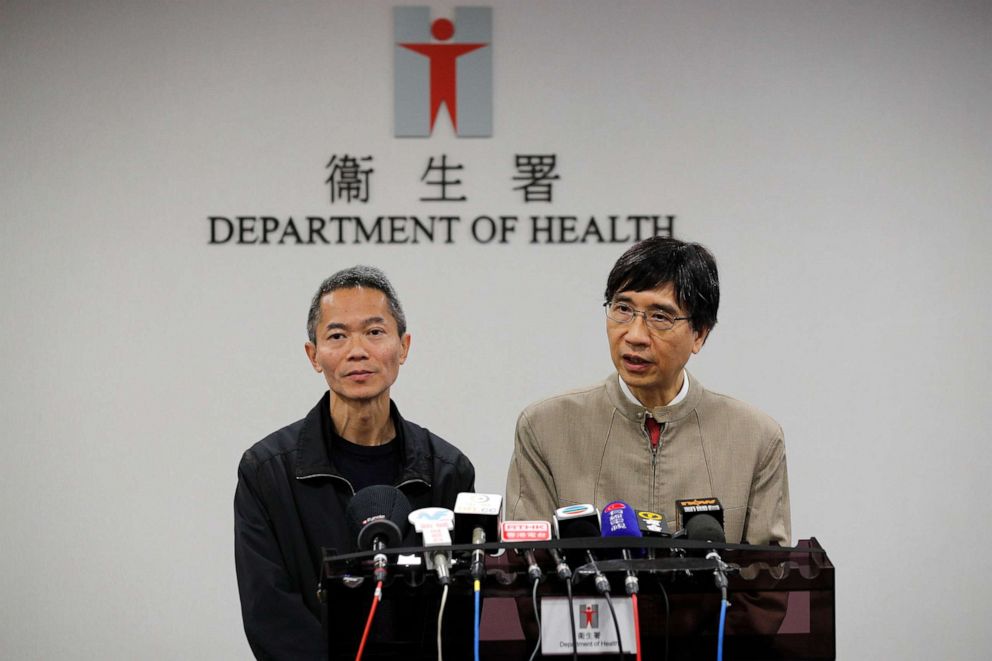
Jan. 13, 2020
The WHO published first protocol for a reverse transcription polymerase chain reaction (RT-PCR) assay by a partner laboratory to diagnose the novel coronavirus.
Jan. 14, 2020
The WHO held a press briefing during which epidemiologist Dr. Maria D. Van Kerkhove stated that, based on experience with respiratory pathogens, the potential for human-to-human transmission among the 41 cases currently confirmed in China existed. "It is certainly possible that there is limited human-to-human transmission," she said.
The WHO later tweeted that preliminary investigations by Chinese authorities had found "no clear evidence of human-to-human transmission." In its risk assessment, the WHO said additional investigation was "needed to ascertain the presence of human-to-human transmission, modes of transmission, common source of exposure and the presence of asymptomatic or mildly symptomatic cases that are undetected."
Jan. 17, 2020
The WHO held the first meeting of the analysis and modelling working group for the novel coronavirus.
Jan. 20, 2020
The Independent Oversight and Advisory Committee for the WHO Health Emergencies Program, which continuously reviews the organization's work in health emergencies, held its first teleconference on the WHO's response to the novel coronavirus outbreak.
The committee was alerted to the cluster of cases in Wuhan on Jan. 2, and the WHO said it provided regular updates to the committee since Jan. 6.
Jan. 20-21, 2020
The WHO conducted its first mission to Wuhan and met with public health officials there to learn about the response to the cluster of cases of novel coronavirus.
Jan. 21, 2020
The WHO Regional Office for the Western Pacific tweeted that it was now very clear from the latest information that there was "at least some human-to-human transmission," and that infections among health care workers strengthened the evidence for this.
Meanwhile, the United States reported its first confirmed case of the novel coronavirus.
Jan. 22, 2020
After its mission to Wuhan, the WHO issued a statement saying that evidence suggested human-to-human transmission in the Chinese city but that more investigation was needed to understand the full extent of the transmission.
Jan. 22-23, 2020
The WHO's director-general, Tedros, gathered an emergency committee regarding the outbreak of the novel coronavirus. The committee was comprised of 15 independent experts from around the world and was charged with advising Tedros as to whether the outbreak constituted a public health emergency of international concern.
However, the committee was not able to reach a conclusion on Jan. 22 based on the limited information available. So, Tedros asked them to continue their deliberations the next day.
The emergency committee met again on Jan. 23, and members were equally divided as to whether the outbreak constituted a public health emergency of international concern. Several members noted that there was still not enough information to make a determination, given the fact that only a public health emergency of international concern can be declared or not; there is no intermediate level of warning.
Thus, the committee members did not advise Tedros that the event constituted a public health emergency of international concern, but said they were ready to reconvene within 10 days. The committee formulated advice for the WHO, China and other countries as well as the global community.
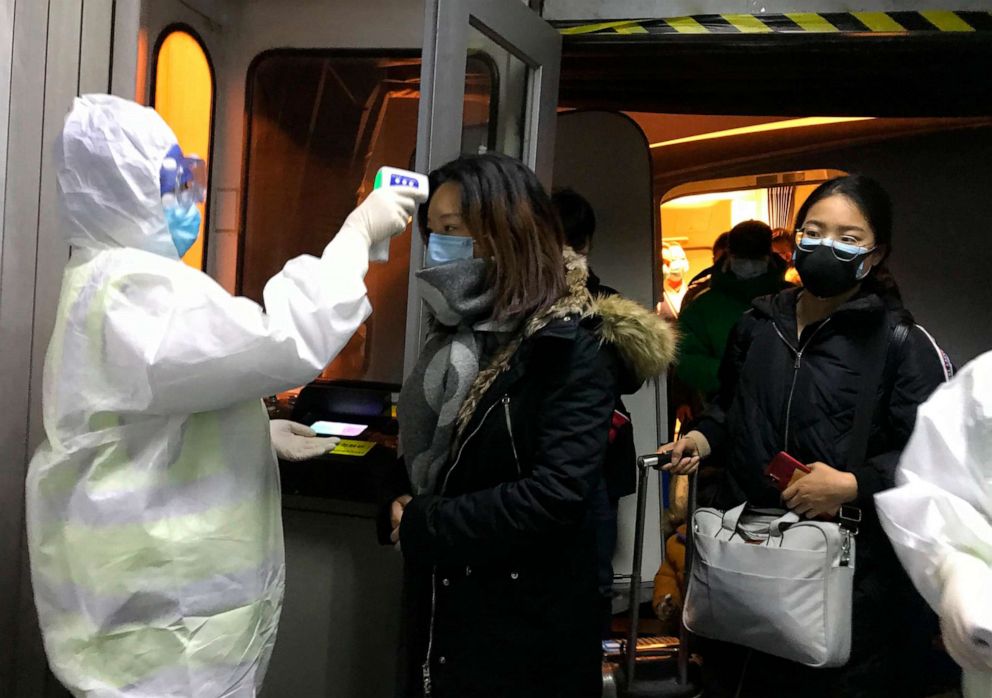
Jan. 27-28, 2020
A senior WHO delegation led by the director-general, Tedros, arrived in Beijing to meet Chinese leaders, learn more about the country's response and offer technical assistance.
Tedros met with Chinese President Xi Jinping and discussed continued collaboration on containment measures in Wuhan, public health measures in other cities and provinces, conducting further studies on the severity and transmissibility of the virus, continuing to share data, as well as a request for China to share biological material with the WHO. They agreed that an international team of leading scientists should travel to China to better understand the context and the overall response, as well as to exchange information and experience.
Jan. 29, 2020
Upon his return to Switzerland from China, the WHO's director-general presented an update to member states on the response to the outbreak. He also announced that the emergency committee would meet again the following day to advise on whether the outbreak constituted a public health emergency of international concern.
Tedros said he based the decision to reconvene the committee on the "deeply concerning" continued increase in cases and evidence of human-to-human transmission outside China, in addition to the numbers outside China holding the potential for a much larger outbreak -- even though they were still relatively small.
The WHO then held the first of its weekly informal discussions with a group of public health leaders from around the world. The organization also published advice on the use of masks in the community, during home care and in health care settings.
Jan. 30, 2020
The WHO's director-general reconvened the emergency committee, which subsequently advised that the outbreak now met the criteria for a public health emergency of international concern.
Tedros accepted the committee's advice and declared the novel coronavirus outbreak a public health emergency of international concern. At that time, there were 98 cases and no deaths in 18 countries outside China. Four countries -- Germany, Japan, the United States and Vietnam -- had evidence (eight cases) of human-to-human transmission outside China.
The committee formulated advice for China as well as all countries and the global community, which Tedros accepted and issued as temporary recommendations under the International Health Regulations.
Feb. 2, 2020
The first dispatch of RT-PCR lab diagnostic kits shipped to the WHO's regional offices around the world.
Feb. 3, 2020
The WHO finalized its Strategic Preparedness and Response Plan, centered on improving capacity to detect, prepare and respond to the outbreak. The plan translated what had been learned about the novel coronavirus so far into strategic action to guide the development of national and regional operational plans.
Feb. 4, 2020
The WHO's director-general, Tedros, asked the U.N. secretary-general to activate the organization's crisis management policy, which held its first meeting a week later.
The WHO held a technical briefing on the novel coronavirus outbreak during the 146th session of the executive board. In his opening remarks, Tedros urged member states to prepare themselves by taking action now, saying, "We have a window of opportunity. While 99% of cases are in China, in the rest of the world we only have 176 cases."
Responding to a question at the executive board meeting, WHO officials said, "It is possible that there may be individuals who are asymptomatic that shed virus, but we need more detailed studies around this to determine how often that is happening and if this is leading to secondary transmission."
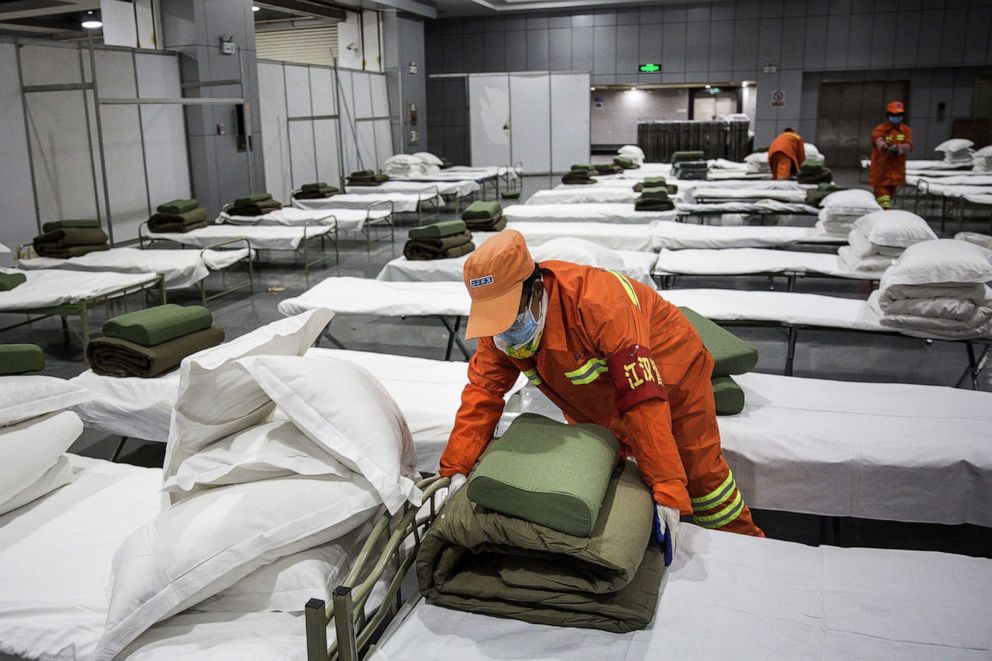
Feb. 5, 2020
The WHO's headquarters in Geneva began holding daily media briefings on the novel coronavirus --it was the first time the organization had held daily briefings by the director-general or executive director of the WHO Health Emergencies Program.
Feb. 9, 2020
The WHO deployed an advance team for its joint mission with China, having received approval from the Chinese government earlier that day. The team completed five days of intensive preparation for the mission, working with China's National Health Commission, the Chinese Center for Disease Control and Prevention, local partners and related entities as well as the WHO's country office in China.
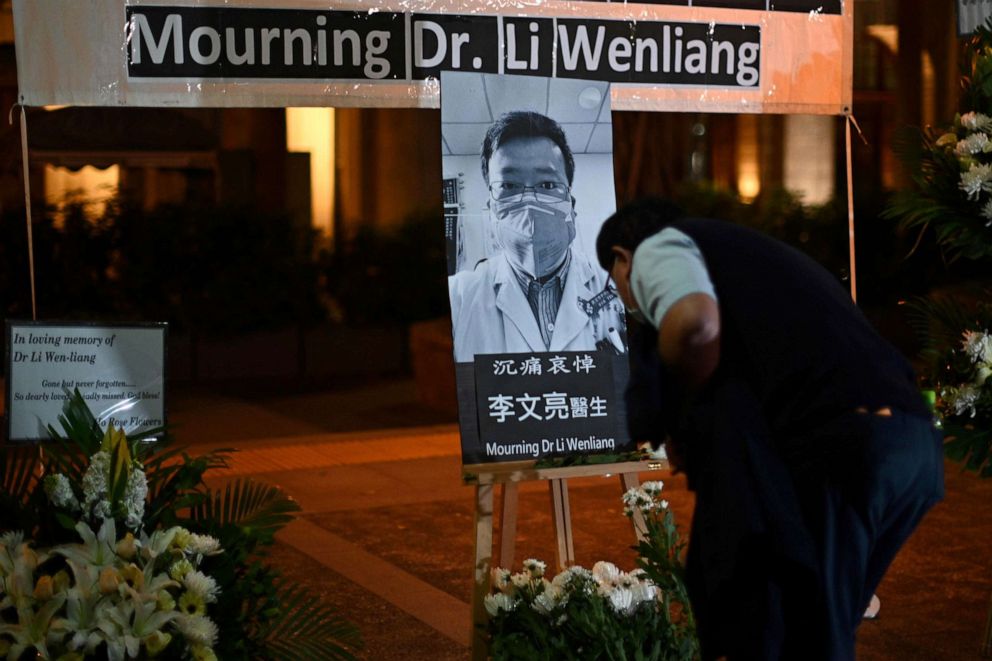
Feb. 11, 2020
The WHO announced that the disease caused by the novel coronavirus would be named COVID-19.
Meanwhile, the U.N. crisis management policy held its first meeting on the outbreak.
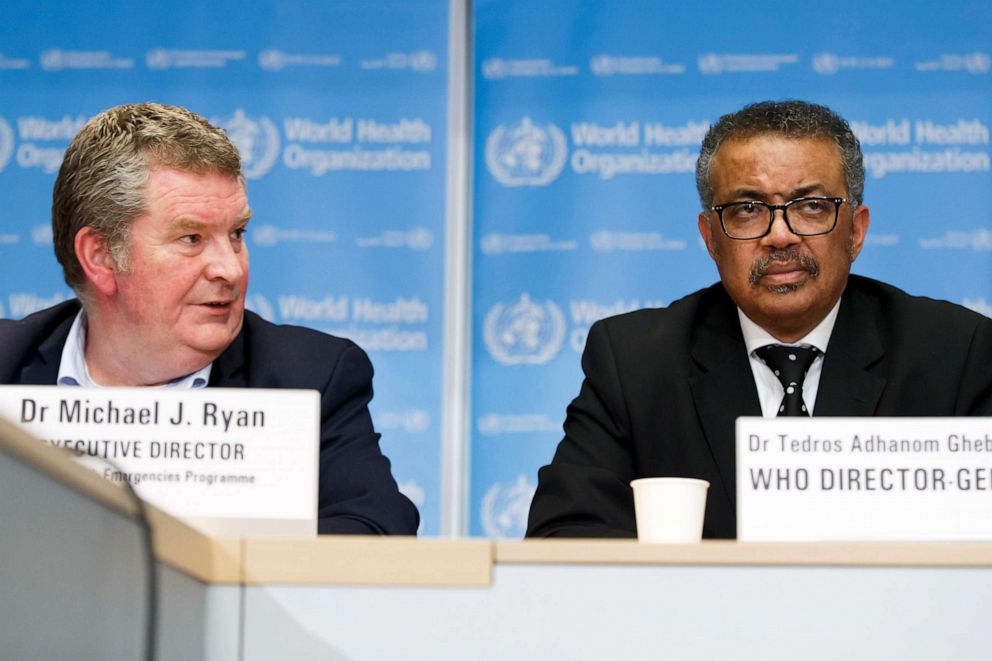
Feb. 11-12, 2020
The WHO convened a Global Research and Innovation Forum on the novel coronavirus, attended in person by more than 300 experts and funders from 48 nations, with an additional 150 joining online. Participants came together to assess the level of knowledge, identify gaps and work to accelerate and fund priority research.
Feb. 16, 2020
The WHO-China joint mission began its work. Teams made field visits to Beijing, Guangdong, Sichuan and Wuhan as part of the goal to assess the severity of the new disease, its transmission dynamics and the nature and impact of China's control measures. The mission consisted of 25 national and international experts from China, Germany, Japan, South Korea, Nigeria, Russia, Singapore, the United States and the WHO.
Throughout the global outbreak, the WHO said it regularly sent missions to various countries, such as Italy, to learn from and support responses.
Feb. 19, 2020
The WHO launched its weekly briefings on COVID-19 with its member states.
Feb. 21, 2020
The WHO's director-general appointed six special envoys on COVID-19 who were charged with providing strategic advice as well as high-level political advocacy and engagement in various parts of the world.
Feb. 24, 2020
The team leaders of the WHO-China joint mission held a press conference to report on the main findings.
The mission's leaders warned that "much of the global community is not yet ready, in mindset and materially, to implement the measures that have been employed to contain COVID-19 in China." They also emphasized that "to reduce COVID-19 illness and death, near-term readiness planning must embrace the large-scale implementation of high-quality, non-pharmaceutical public health measures," such as case detection and isolation, contact tracing and monitoring/quarantining and community engagement.
Based on the findings, recommendations were developed for China, countries with imported cases and/or outbreaks and uninfected countries.
The WHO also published operational considerations for managing COVID-19 cases and outbreaks on board ships.
Feb. 28, 2020
The WHO-China joint mission issued its report as a reference point for countries on measures needed to contain COVID-19.
March 7, 2020
As the global number of confirmed COVID-19 cases surpassed 100,000, the WHO issued a statement calling for action from countries to stop, contain, control, delay and reduce the impact of the virus at every opportunity.
The organization also issued a consolidated package of existing guidance covering the preparedness, readiness and response actions for four different transmission scenarios: no cases, sporadic cases, clusters of cases and community transmission.
March 11, 2020
As the novel coronavirus continued to spread rapidly across the globe, the WHO made the assessment that COVID-19 could be characterized as a pandemic.
Speaking at the daily briefing, the WHO's director-general stressed that "all countries can still change the course of this pandemic" if they "detect, test, treat, isolate, trace and mobilize their people in the response."
"We cannot say this loudly enough, or clearly enough, or often enough," Tedros said. "The challenge for many countries who are now dealing with large clusters or community transmission is not whether they can do the same, it's whether they will."
March 13, 2020
The WHO's director-general announced that Europe had become the epicenter of the coronavirus pandemic, with more reported cases and deaths than the rest of the world combined -- apart from China.
March 21, 2020
The WHO published laboratory testing strategy recommendations for COVID-19, as many member states faced shortfalls in testing capacity.
March 25, 2020
The U.N. Global Humanitarian Response Plan was launched by the WHO's director-general, the U.N. secretary-general, the UN under-secretary-general for humanitarian affairs and the UNICEF's executive director.
The WHO also updated its operation planning guidelines to help nations balance the demands of responding directly to COVID-19 while protecting health care workers, maintaining essential health services and mitigating the risk of a system collapse.
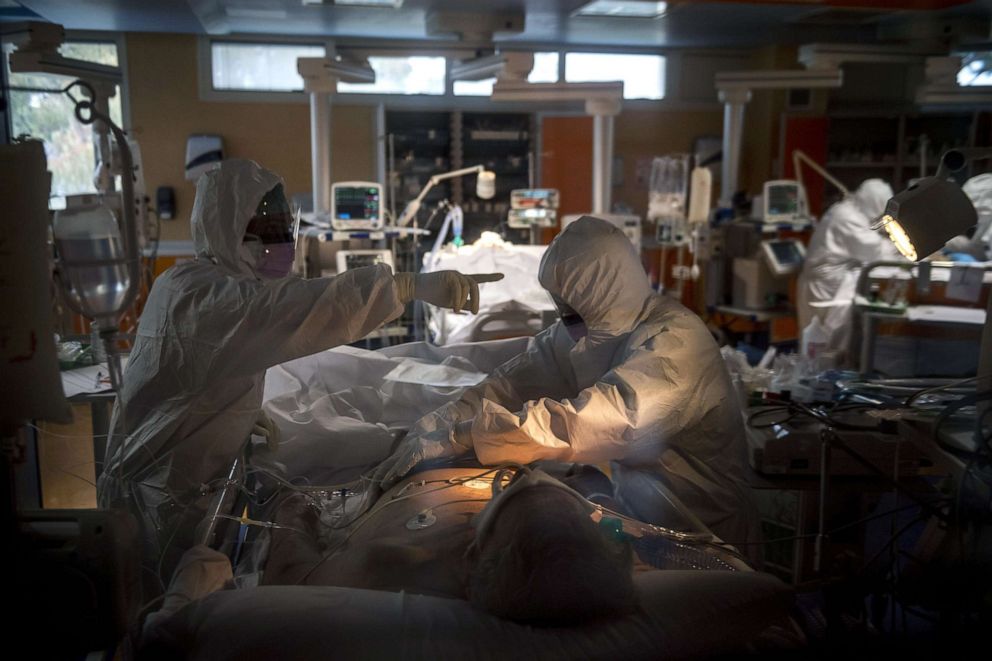
March 26, 2020
The WHO's director-general addressed the Extraordinary G20 Summit on COVID-19 via video conference and called on G20 leaders to fight, unite and ignite against the coronavirus pandemic.
March 30, 2020
By this point, the WHO had shipped nearly 2 million individual items of protective gear to 74 countries that needed them most, and was working with several partners to massively increase access to live-saving products, including diagnostics, personal protective equipment, medical oxygen and ventilators.
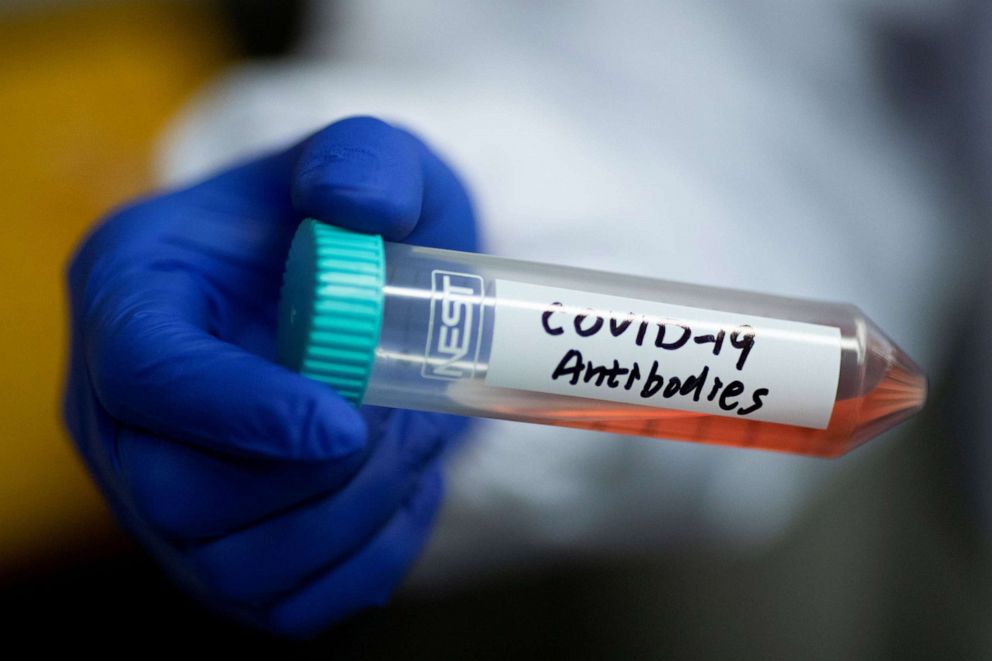
April 2, 2020
The WHO reported on evidence of transmission from symptomatic, pre-symptomatic and asymptomatic people infected with COVID-19, noting that transmission from a pre-symptomatic case can occur before symptoms arise.
April 4, 2020
The WHO reported that over 1 million cases of COVID-19 had been confirmed worldwide, showing there was a more than tenfold increase in less than a month.
April 14, 2020
U.S. President Donald Trump announced that he was halting funding to the WHO while his administration reviewed the body's handling of the coronavirus pandemic.
"With the outbreak of the COVID-19 pandemic, we have deep concerns whether America's generosity has been put to the best use possible," Trump said during his nightly press briefing. "The reality is that the WHO failed to adequately obtain, vet and share information in a timely and transparent fashion."
Trump accused the WHO of "severely mismanaging and covering up the spread of the coronavirus" and called its opposition to U.S. travel restrictions on China in the outbreak's early months "disastrous." While WHO did call such travel bans "ineffective in most situations" at the time, the group did acknowledge that they could buy countries time to "to initiate and implement effective preparedness measures."
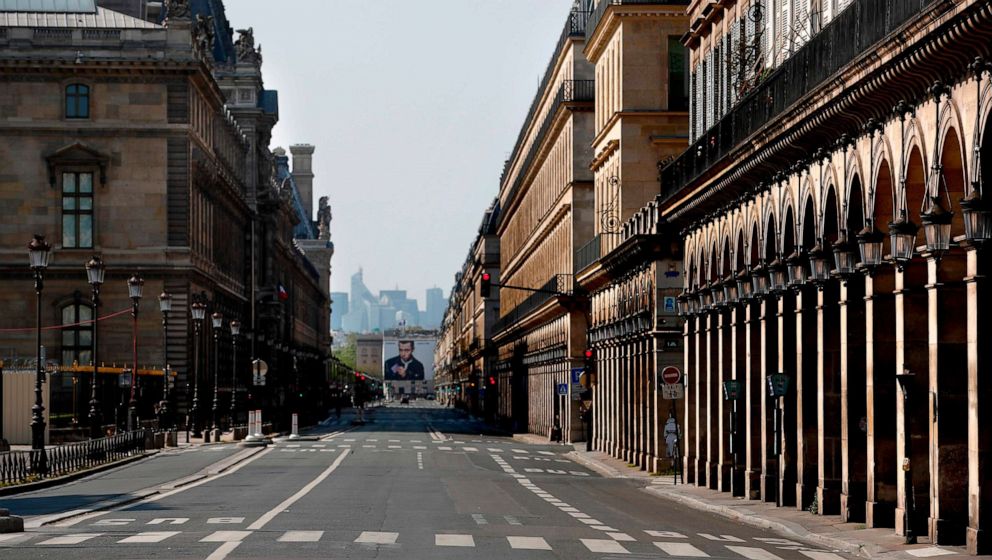
April 30, 2020
The WHO's director-general convened the emergency committee on COVID-19 for a third time, with an expanded membership to reflect the nature of the pandemic and the need to include additional areas of expertise.
The committee met and issued its statement the next day.
May 1, 2020
The WHO's director-general declared that the COVID-19 outbreak continued to constitute a public health emergency of international concern. He accepted the committee's advice and issued temporary recommendations.
Tedros also accepted the committee's advice that "WHO works to identify the animal source of the virus through international scientific and collaborative missions."
May 18, 2020
The Independent Oversight and Advisory Committee for the WHO Health Emergencies Program finalized and published its interim report on the WHO's response to COVID-19 from January to April.
The committee continued to review the work of the WHO on the coronavirus pandemic and said it would report it findings during the next meeting of the WHO's governing bodies.
May 18-19, 2020
The World Health Assembly, a decision-making body of the WHO, met via video conference for its 73rd annual gathering -- the first ever held virtually.
During the meeting, delegates adopted a landmark resolution that requested the WHO's director-general initiate an impartial, independent and comprehensive evaluation of the response to COVID-19. It further called on the director-general to work with other organizations and countries "to identify the zoonotic source of the virus and the route of introduction to the human population."
The resolution urged member states to take several actions, including to provide the WHO with "sustainable funding" and "timely, accurate and sufficiently detailed public health information related to the COVID-19 pandemic, as required by the International Health Regulations." The document also called for, among other things, the intensification of efforts to control the pandemic, equitable access to and fair distribution of all essential health technologies and products to combat the virus.
The resolution was co-sponsored by more than 130 nations -- the largest number on record -- and adopted by consensus.
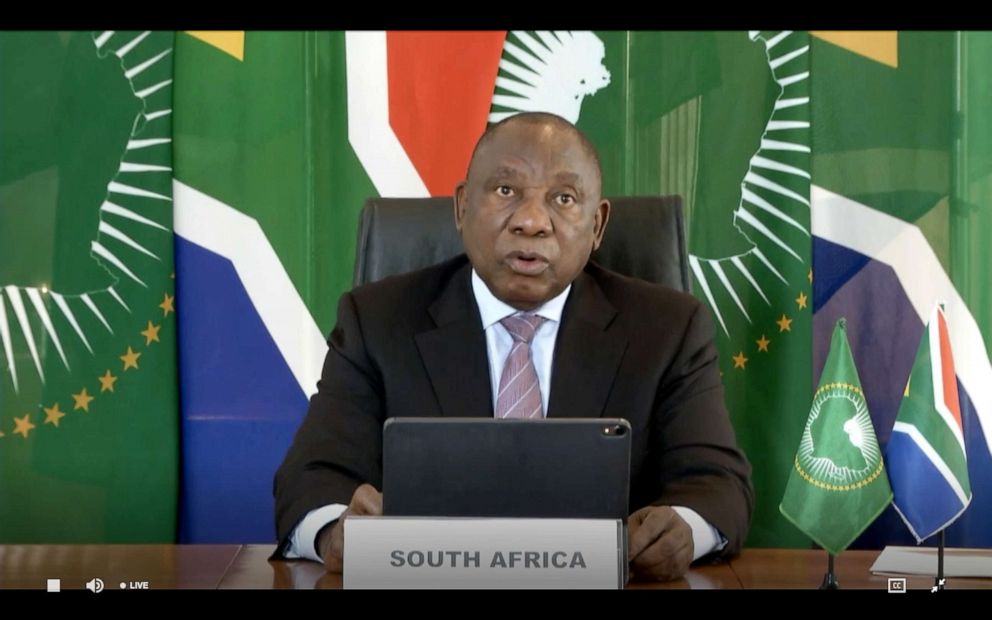
During his address to the World Health Assembly, U.S. Health Secretary Alex Azar said the WHO had let the pandemic spin "out of control" at the cost of "many lives."
"There was a failure by this organization to obtain the information that the world needed," Azar said.
Meanwhile, Chinese President Xi Jinping announced that his country would give $2 billion over two years to help other countries respond to the devastating impact of the pandemic. It was not immediately clear how much of that money would actually go to the WHO.
In his closing remarks, the WHO's director-general outlined how the organization was fighting the virus with every tool at its disposal, saying, "Let our shared humanity be the antidote to our shared threat."
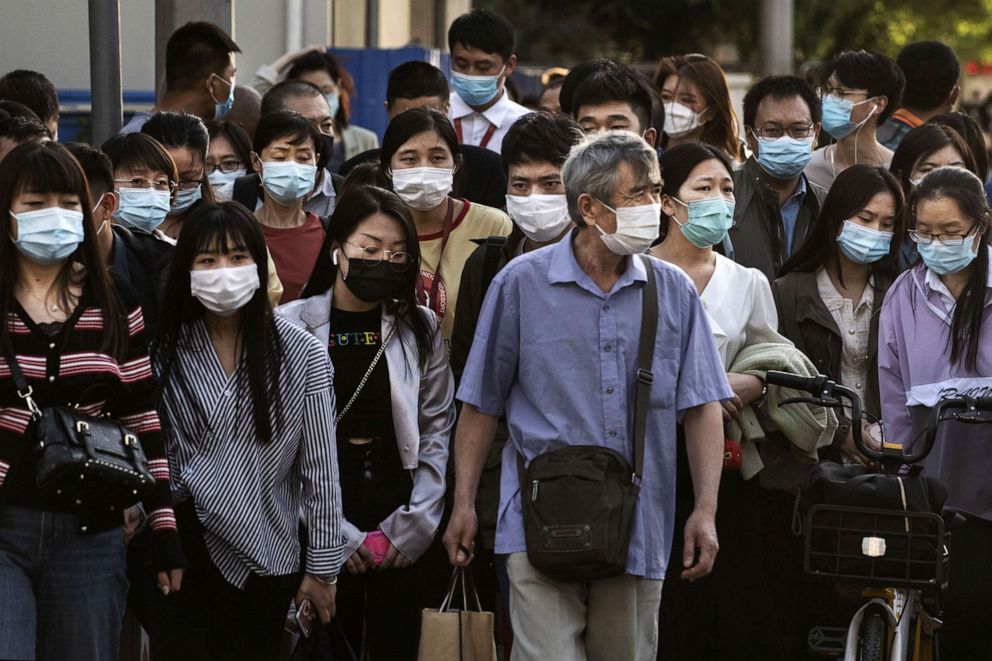
May 29, 2020
Trump announced that his administration would terminate its relationship with the WHO over the organization's handling of the pandemic.
Speaking to reporters in the White House Rose Garden, Trump said Chinese officials "ignored their reporting obligations" to the WHO about the deadly virus and pressured the U.N. agency to "mislead the world."
"China has total control over the World Health Organization despite only paying $40 million per year compared to what the United States has been paying which is approximately $450 million a year," Trump said, adding that his government would be "redirecting" the money to "other worldwide and deserving urgent global public health needs," without providing specifics.
Trump previously halted funding for the 194-member organization, then in a May 18 letter gave the WHO 30 days to commit to reforms. The United States is the largest source of financial support to the WHO.
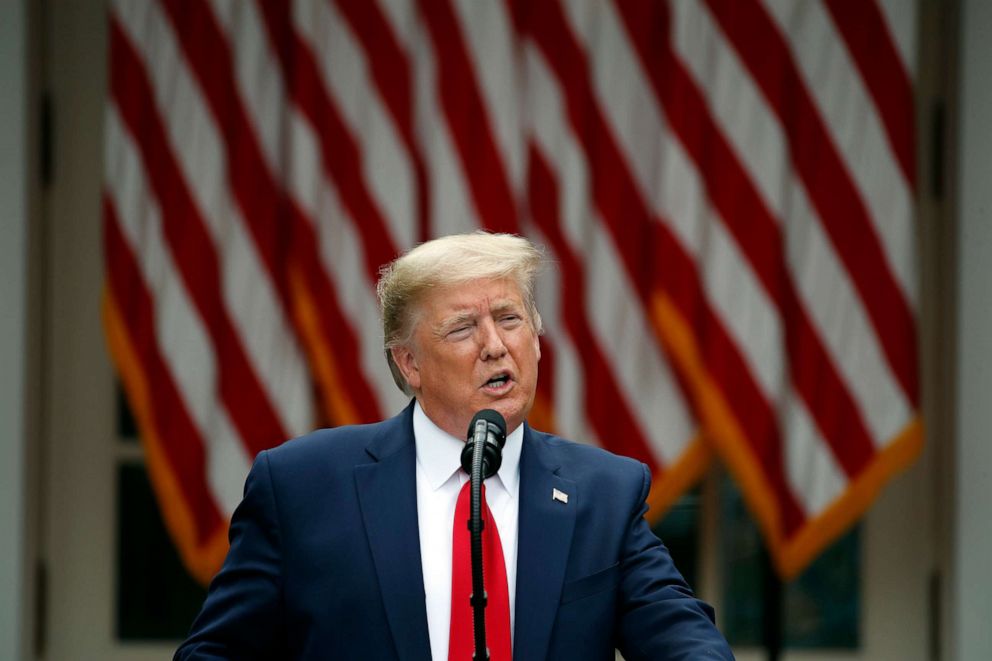
June 5, 2020
The WHO's director-general, Tedros, shared new guidance on mask wearing for health workers and the general public, based on new findings from "evolving evidence."
Tedros advised that anyone working in clinical areas of a health facility -- not just those dealing with COVID-19 patients -- should wear medical masks. He said that for communities with widespread transmission, members of the general public aged 60 and older, as well as those with underlying health conditions, should wear medical masks in situations where physical distancing is not possible. The general public should now wear non-medical masks in areas of widespread transmission and when physical distancing is difficult, such as on public transportation, in shops or in other confined or crowded environments, Tedros added.
The director-general also released new guidance on cloth masks, recommending that they consist of at least three layers of different materials.
Tedros still advised people who were sick to wear masks if they had to go out, though they were urged to stay home. He said home caregivers should still wear masks to protect themselves and prevent further transmission, and health workers should still wear medical masks and use other protective equipment when dealing with suspected or confirmed COVID-19 patients.
"I cannot say this clearly enough: Masks alone will not protect you from COVID-19," Tedros said. "Masks are not a replacement for physical distancing, hand hygiene and other public health measures. Masks are only of benefit as part of a comprehensive approach in the fight against COVID-19."
"The cornerstone of the response in every country must be to find, isolate, test and care for every case, and to trace and quarantine every contact," he added. "That is what we know works. That is every country's best defense against COVID-19."
June 26, 2020
Sweden's state epidemiologist accused the WHO of misinterpreting COVID-19 data and exaggerating the health risks his country faced, after the organization warned that Sweden and 10 other European nations are showing an increase in infections.
Dr. Anders Tegnell, the architect of Sweden's no-lockdown response to fighting its novel coronavirus outbreak, said the WHO made a "total mistake" by including the Nordic nation on a list that showed where "accelerated transmission has led to very significant resurgence that, if left unchecked, will push health systems to the brink once again in Europe." The list, which named 11 countries, overlooked the nuances in Sweden's testing strategy, according to Tegnell.
"We have an increased number of cases since we started testing a lot more in Sweden last week," Tegnell told Swedish public radio. "But we can look at all other parameters we measure, that is how many serious cases we have; they're decreasing."
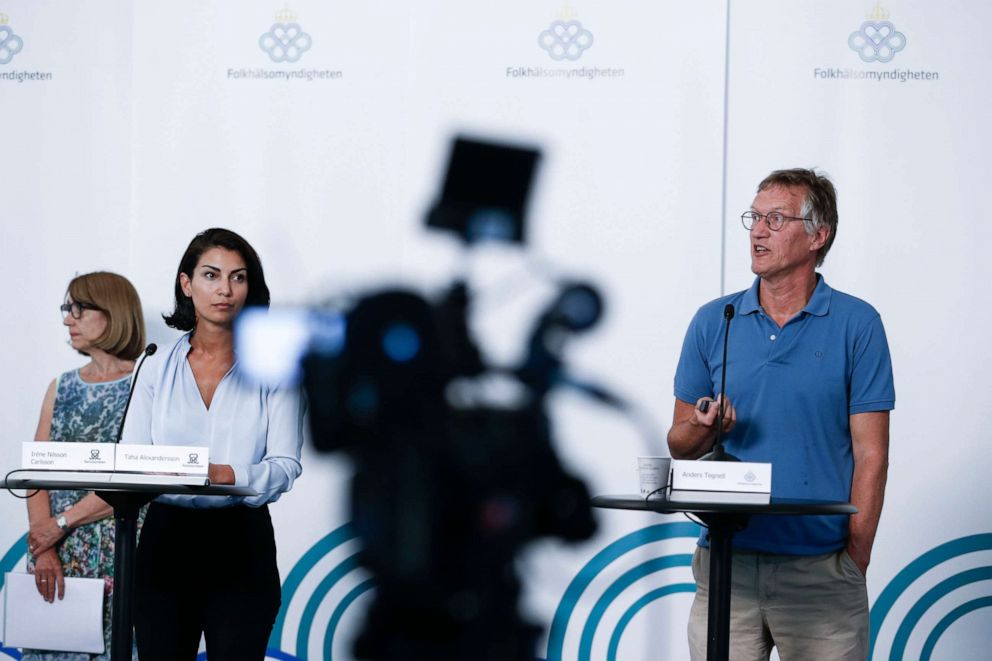
July 7, 2020
The U.S. notified the WHO that it would formally withdraw from the body next year, according to a senior Trump administration official.
"The United States' notice of withdrawal, effective July 6, 2021, has been submitted to the U.N. Secretary-General, who is the depository for the WHO," the official said in a written statement.
The U.N. confirmed it received the letter and was verifying with the WHO that the U.S. met the conditions for withdrawal, which include giving a year's notice and payment of all financial obligations.
When contacted by ABC News, a WHO spokesperson did not have any further details.
July 9, 2020
The WHO announced the initiation of the Independent Panel for Pandemic Preparedness and Response to evaluate the world's response to the coronavirus pandemic.
They said the panel will be led by former New Zealand Prime Minister Helen Clark and former Liberian President Ellen Johnson Sirleaf, and will present an interim report in November. A substantive report to the health findings will be presented at the 74th World Health Assembly next year.
"This is a time for self-reflection, to look at the world we live in and to find ways to strengthen our collaboration as we work together to save lives and bring this pandemic under control," Tedros said. "The magnitude of this pandemic, which has touched virtually everyone in the world, clearly deserves a commensurate evaluation."
The WHO noted that the creation of the panel was not linked to the U.S., but rather was a response to the request in a landmark resolution adopted by the World Health Assembly back in May.
July 10, 2020
WHO experts departed for China to work with their Chinese counterparts to prepare scientific plans for identifying the zoonotic source of COVID-19, as part of a WHO-led international mission aimed to advance the understanding of animal hosts for the new virus and ascertain how the disease jumped between animals and humans.




